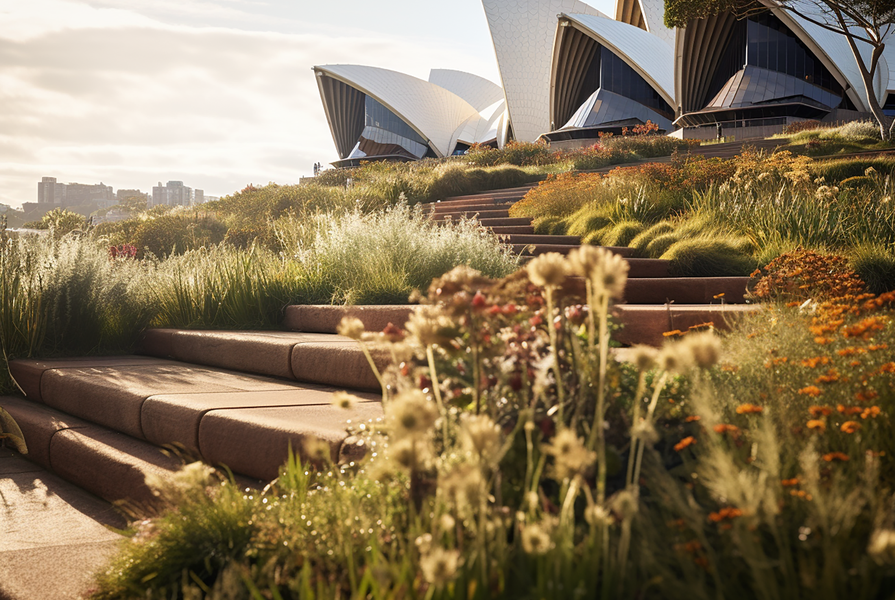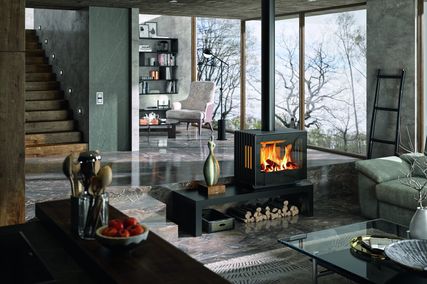Currently based in Sydney, Jon Hazelwood is principal and sector lead for public realm at Hassell. He has 20 years’ experience in private practice in both Australia and the UK. An experienced public realm and landscape architecture professional, he uses imaginative details to spark conversations. Personally, he has been using AI for about six months.
Roland Snooks and Gwyllim Jahn (guest editors): What is the agenda behind these images?
Jon Hazelwood: Our Instagram feeds are filling daily with “impossible” architectural images produced using Midjourney and other AI platforms. These particular Midjourney explorations do not necessarily appear impossible, nor do they have the instant gratification of an inflatable spiral staircase; however, they are just as fantastical.
I lead teams globally in the design of urban public realm and landscapes, and it can be a constant challenge proposing and installing large quantities of biodiverse landscapes in our cities. Despite the global biodiversity crisis, and the quantum of research that demonstrates the power of urban biodiversity for our planet and our wellbeing, we are still challenged with questions such as, “Is it civic enough?”, “Where is all the lawn?” and “How will we ever maintain this?”
At Hassell, Jon Hazelwood uses Midjourney to generate images that demonstrate the quantum of biodiverse nature that is required for nature-positive cities.
Image: Hassell/Midjourney
These particular Midjourney images are explorations with a purpose. On the face of it, they look like they could exist; however, the quantum of nature that I am demonstrating is just as fantastical as an Eiffel Tower made from marshmallows. This is the quantum of biodiverse nature that is required if our cities are to become nature-positive.
Guest editors: Are they more or less impactful than images created in other ways?
JH: The impact of these images is that they are one-offs – the plants will never exist again, they become instantly extinct. Just like these fantastical assemblages of plants that appear in the images, a Midjourney image is an ephemeral thing.
Guest editors: What are the limitations of making images in this way?
JH: It can take hundreds of iterations until an image appears that is interesting and purposeful – and then, once you find it, you can never get it back again. The plants and the composition of them are a once-off, never-to-be-repeated thing, just as in nature. It is this ephemeral unknown that I am currently enjoying as we test and explore its use. In some ways, it will be a shame when it (inevitably) evolves into something that gives the user exactly what is in their head, just like a professionally produced render, rather than the current iterative process of trial and error that requires a designer’s input to produce interesting and thought-provoking results.



















